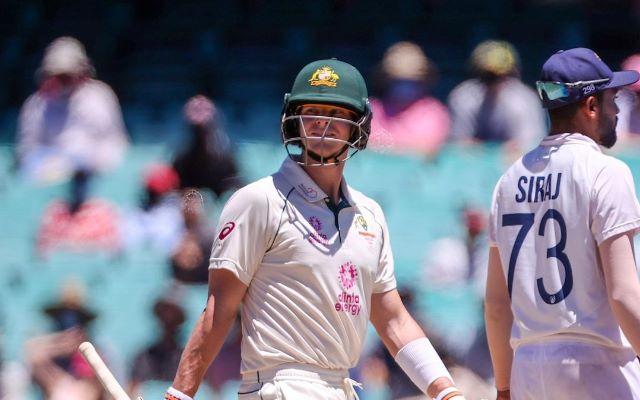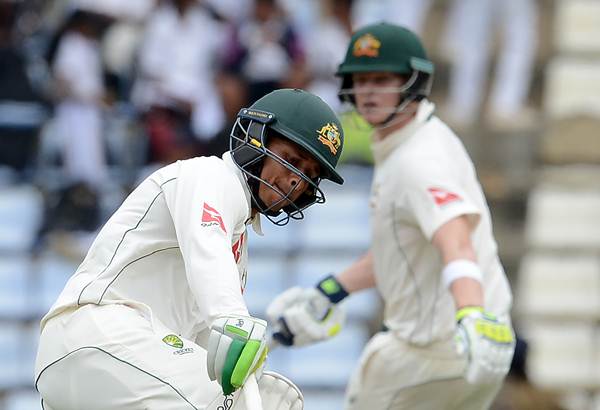Australia’s decline in Test cricket is a sad sign
View : 537
5 Min Read


They were once the Brazil of cricket. Besides the yellow jersey, it is also the ruthless killer instinct which had made the Australians resemble the Latin American soccer giants. Take any form of cricket and the team, powered by some fantastic talents and credible captaincy, didn’t allow its opponents to breathe easy even for a moment. But all that looks a matter of the past now.
The Australian cricket team has failed to impress its fans of late and its latest 0-3 drubbing in Sri Lanka, one of the Asian countries where it has traditionally done better, saw it losing the No. 1 tag.
Border, Taylor, Steve Waugh, Ponting… Aussies just went high and high
Australia was guided to the pinnacle in Test cricket by a series of magnificent captains in Allan Border, Mark Taylor, Steve Waugh, Ricky Ponting and Michael Clarke and also occasionally by that brilliant wicket-keeper named Adam Gilchrist. It meant to be a nationalistic mission for every generation of cricketers that came up Down Under to erase the not-so-great memories of the Kim Hughes era when Australia had lost six straight Test matches.
Since Border’s taking over in 1984 till Michael Clarke retired in 2015, Australia won five 50-over World Cups, finished as the runners-up in one edition and finished winners in 175 Test matches out of 330 (53 percent success rate). And if we narrow it down further to Waugh, Ponting and Gilchrist, we will find the success rate go up to 66.42 percent (93 victories out of 140 Tests) between 1999 and 2010 – the same period when Australia also pocketed three consecutive ODI World Cups. Only a miracle could have stopped Ponting’s men from taking the record of most consecutive number of Test match victories beyond the human reach and that miracle had indeed come from the bat of an Indian named VVS Laxman at the Eden Gardens in 2001.
How Australia’s domination against teams lost the edge
But once the members of that invincible team started departing after dominating the game, the golden days gradually got over in Tests. Take for instance, some of these statistics. Australia had lost a Test series to Sri Lanka only once, whether in their own den or in the Asian nation, but were hammered in all the three matches in the latest series.
The Ashes were extremely one-sided for 16 long years between 1989 and 2005 when Australia never lost. But after England won the thrilling 2005 series 2-1, Australia’s dominance was a thing of the past. Of the next six series that were played between these two sides, England won four.
Against India, Australia lost a Test in Perth in 2008, something which seemed impossible once. Though they continued to dominate India on their own soil, their performance in India since the historic series of 2001 and 2004 (Australia won that series) saw a drastic decline. The visitors have lost eight of the last 10 Tests played in India and won none.
Australia also dominated South Africa ever since the Proteas returned to international cricket in 1991 till 2005 but since 2008, it has been even-steven.
Even Pakistan, a pale shadow of the terror it used to be once, thumped Australia in a two-Test series in the UAE in 2014-15, earning a series victory in the longest form of the game against the Aussies after two decades!
An average Australian supporter can only find solace in the team’s dictating terms over teams like the West Indies, New Zealand, Bangladesh and Zimbabwe– which are hardly formidable forces in present-era cricket.

But why this decline of the superpower?
But why has Australia seen such a decline in Test matches? Their prowess in limited-over cricket hasn’t diminished (Australia knocked out the Sri Lankans 4-1 in the ODI series that followed the Tests) and they are also the reigning world champions.
Australia’s biggest problem today is that they are failing too much in spin-friendly conditions. Although the country’s cricket brains have prepared spinning conditions and more youngsters are being sent on tours to Asian countries, but as former great Ian Chappell feels, it is too late to begin tackling spin bowling in the twenties. Chappell rued the way Australian batsmen were getting stumped in Sri Lanka, saying their approach to play spin was nervous.
The Australians nowadays play regularly in India, thanks to the IPL, but blasting bowlers on flat wickets to keep up the run rate is a different thing altogether than to survive a session on a deteriorating turf. Australia hasn’t won a single Test in Asia since 2012 while in 2002-6, they had won 10 out of 12 matches played at the same venue.
Also read: The debilitating effect of social media on the lives of cricketers
It is not that cricket’s popularity is waning in Australia but the priorities have surely started to shift. Television viewership has become a major revenue earner for the game, even more than the qualitative aspects and this necessity has made T20 more relevant than Test. The result: the fundamentals of Test batting have been overshadowed by the pyrotechnics of slam-bang cricket and that coupled with the Gen Y attitude ensures that the longer route to the peak is virtually a deserted one now.
The decline in the importance of club cricket has also been responsible and it can be linked with the above reason. As old players retire, the elite junior ones are taken to academies from clubs and that eventually, sees the youngsters locking horns against each and not going through the hard process at the club level. Instead of learning the tricks of the trade from the old-timers in the club, the young players become leaders in their own world.
As a result, competition like the Sheffield Shield doesn’t serve as the supply line for Test cricket as it used to be even a decade back, feel formers like Mike Hussey.
The durability of the cricketers, too, have gone down. It’s not just that they are getting injured too frequently because of the overdose of cricket, it’s also that their mental sturdiness to survive five days for a cause has become weak.
Other sports like soccer or cricket variants like T20 have taken over, thanks to the fatter pay and excitement to play in front of big crowds and stay more in the limelight. The will to play five-day games and excel has vanished.
Australia’s hope now lies on learning the lesson from the steady slide. Just as England did it to turn around its cricketing fortunes, Australia’s cricket administrators, too, are renewing focus on first-class cricket and protecting it from the effects of the T20 Big Bash League so that talents that can serve Test cricket are not lost or wasted.
Now whether Australia can produce the likes of Glenn McGrath, Shane Warne, Matthew Hayden, Ponting or a Gilchrist in the near future and pick them back again to the top, only time will tell.
Written by Shubham Ghosh.
Download Our App